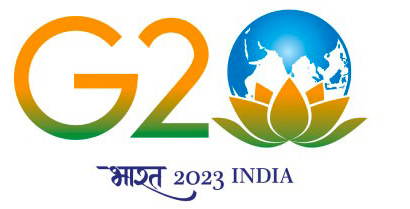Health is a priority for G20 since the first health ministers’ meeting in November 2017. Moreover, in 2018, the UN General Assembly adopted a combined Universal Health Care (UHC) and Primary Health Care (PHC) approach to strengthening primary-level care linked to non-medical preventive action, extending the “PHC principles” to secondary and tertiary care. Currently, India’s G20 Presidency logically provides a sustainable healthcare agenda as a pioneer for initiatives like NHM, HIV programmes, pharmaceutical and vaccine capacity, and social insurance schemes. Therefore, a natural key priority would be to reasonably coordinate innovative strategies to address the growing global burden of NCDs and promote resilience for today, well-being for tomorrow, and UN SDGs for further in time.
These priorities align with the worldwide COVID-19 pandemic, which lowered global life expectancy and halted two decades of work towards universal health coverage. As a result, urgent consideration and change are needed to set the world back on the desired trajectory towards achieving SDG 3 which is good health and well-being.
Times have now come to get together, bounce back, recuperate real human power of common reason, accept imperfections and be humble in setting high and often unrealistic global goals.
“Good health is not just the absence of disease…” prevention and intervention strategies are needed to maintain a longer health span. In addition, concerns have emerged that macroeconomic statistics fail to fully provide a good picture of the living conditions of ordinary people. The OECD Framework for Measuring Well-being and Progress supports this process built around three components: current well-being, inequalities in well-being outcomes, and resources for future well-being.
Times have now come to get together, bounce back, recuperate real human power of common reason, accept imperfections and be humble in setting high and often unrealistic global goals. The interaction between humans and the living environment should be reconciled with unpredictable health hazards and preventable and modifiable risks. What humans can do to make a positive change in the world is no more than what they do to change their behaviours. High and too-ambitious global goals have ceased to resonate in humans’ minds. People, especially the young generations, care about living today, and global leaders must recognise the gap. Building resilience means that global leadership provides a clear mirror to people, in whose reflection people would like themselves, and they are willing and capable of doing minor yet achievable “edits” to their image in the mirror.
In 2021, PanEuropa Bulgaria, an organisation dedicated to promoting peace, human rights, technological progress, and European integration and solidarity, released its report called “The (In?)VINCIBLE PANDEMICS”. It aims to identify the most prevalent modifiable health risk factors and provide easy-to-understand science, eye-opening and honest recommendations for reducing harm and related economic burden. Furthermore, the report encourages a shift towards innovative, science-based solutions and respects individuals’ rights to make personal choices.

Figure 1. Risk factors, that kill 7 out of 10 people worldwide.
Harm reduction is a pragmatic and innovative approach that is gaining momentum in addressing the health risk factors for non-communicable diseases (NCDs). It promotes a more comprehensive, science-based, and compassionate approach to care. With the ever-increasing burden of NCDs, it has become more critical to consider harm reduction as a viable approach in public health policy. Behavioural risk factors, such as unhealthy diet, use of tobacco, and sedentary life/physical inactivity are responsible for a significant portion of major contributors to premature deaths. These risk factors and others, such as excessive consumption of alcohol and problematic screen use can be controlled and modified to advance the prevention of diseases (Figure 1).
Higher industry investments and government incentives are also needed to ensure the availability of healthier food choices as well as Front-of-Pack Nutrition Labelling (FOPNL) of foods and beverages.
Harm reduction is increasingly popular to address the risks associated with an unhealthy diet. One of the key strategies is reducing the processing of foods, as well as sugar, salt, and fat content, by encouraging the consumption of unprocessed or less-processed foods and products with no or fewer sugars, salt and fats, which are generally considered healthier. Additionally, it is essential to ensure that less harmful food options are available and affordable to all consumers. Higher industry investments and government incentives are also needed to ensure the availability of healthier food choices as well as Front-of-Pack Nutrition Labelling (FOPNL) of foods and beverages. In addition to these strategies, supporting regular physical activity and educating people about the health risks associated with certain foods is essential. Regulation can also play a role in differentiating products with harmful components, such as free sugars, from those with lower risk. Finally, labelling foods according to their nutritional scores and sugar and salt contents can help people to make more informed choices.
Excessive consumption of alcohol is a global issue that can negatively impact health, safety, families, and society. For example, across OECD countries, 24 per 100,000 die prematurely yearly due to harmful alcohol consumption (Figure 2).
Harm reduction initiatives include limiting alcohol consumption and controlling the intake of high-concentration ethyl alcohol in drinks. Industry engagement is also essential, trade and entertainment facilities staff should actively support their clients to control the number of drinks they order or purchase. Companies should also be involved in educational campaigns that inform of the level of ethanol in alcoholic drinks. Non-alcoholic alternatives, such as non-alcoholic beer, wine, or mocktails, are healthier. Consumers should also check the labels, choose drinks with lower alcohol content, drink at their own pace, and think about any medications they are taking, as alcohol with medication can have adverse effects.
Smoking along with air pollution is the principal global issue that poses a significant risk to public health. One key strategy is educating people about the harms of smoking and increasing health literacy through public health campaigns and information programs. Another is to use pharmacological treatments to help smokers quit. In addition to medical and pharmacological interventions, psychological interventions should also be used. Other approaches include substituting cigarettes or other smoking products with different types of nicotine or tobacco use that do not involve combustion and pose lower exposure to toxicants, carcinogens, and other harmful constituents. Finally, risk-based regulation of differentiated marketing and labelling of products, including fiscal measures relative to the level of risk posed, can be implemented.
One key strategy is educating people about the harms of smoking and increasing health literacy through public health campaigns and information programs.
Problematic screen use time has become a growing global concern (Figure 3). Relevant harm reduction approaches must include regular education programmes for paediatricians and parents about the risks of excessive screen time in children and provide them with tools and resources to set screen time limits. Digital skills education in schools also needs to include parts on maintaining life/screen balance with a focus on incorporating activities that promote teamwork and “old-school activities”, such as plays, arts, and group discussions. These could reduce addictive behaviours, anxiety, and disordered eating. Clear policies on notification formulas and non-paid and paid content promotion methods of social media companies can also be implemented.
Science should reach people in understandable language. Businesses should invest in less harmful products. We as citizens need to appeal to the government to name the problems and set high and ambitious goals and make effective policies with political wisdom for a long-term horizon.
Everyone can contribute and benefit.
“We are what we continually do. Therefore, perfection is not a separate act, but a habit.” ~Aristotle

Figure 3. Risk factors for problematic screen use.
(This essay is a part of the commentary series on G20-Think20 Task Force 3: LiFE, Resilience, and Values for Wellbeing)





